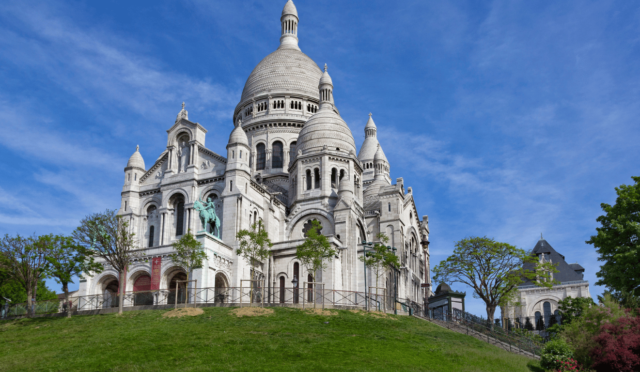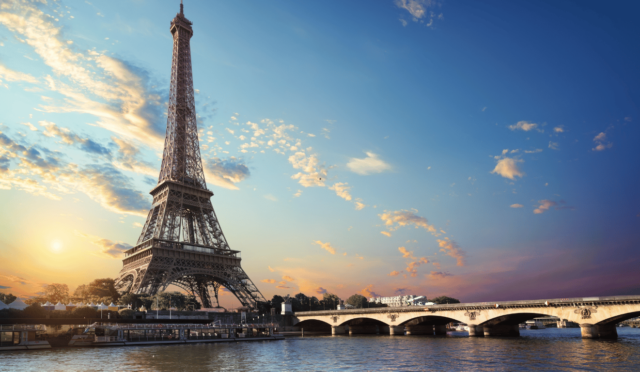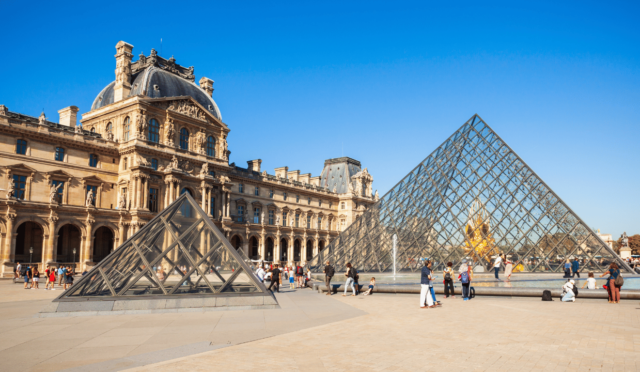The Notre-Dame Cathedral (Notre-Dame de Paris) stands as one of the most iconic and magnificent symbols of France’s cultural and historical heritage. Located on the Île de la Cité in the heart of Paris, this stunning Gothic masterpiece attracts millions of visitors each year, offering a glimpse into the splendor of medieval architecture and the city’s rich past.

A Historical Overview of Notre-Dame Cathedral
The construction of Notre-Dame Cathedral began in 1163 under the reign of King Louis VII and was completed in 1345, spanning nearly two centuries. This monumental structure has witnessed centuries of French history, from royal coronations to significant historical events. Its construction marks a major achievement in Gothic architecture, characterized by soaring spires, pointed arches, and ribbed vaults. Notre-Dame is not only a religious symbol but also a pivotal part of French history.
Architectural Marvel
Notre-Dame Cathedral is a prime example of Gothic architecture, a style that emerged during the 12th century and dominated European church construction until the 16th century. The cathedral’s design is a harmonious blend of bold architectural innovations and intricate craftsmanship. The cathedral is renowned for its flying buttresses, which help support the structure’s towering walls, allowing for large windows filled with stunning stained glass, including the world-famous rose windows.
The cathedral’s façade is adorned with intricate sculptures depicting scenes from the Bible, including the Last Judgment and various biblical figures. The two towering front towers, each standing at a height of 69 meters, offer a striking presence that dominates the Parisian skyline.
The Famous Rose Windows
One of the most notable features of Notre-Dame Cathedral is its breathtaking rose windows. These stained-glass windows are located on the cathedral’s west, north, and south facades. The windows are masterpieces of medieval art, with vibrant colors and intricate patterns that tell biblical stories. The most famous of these is the west rose window, measuring nearly 10 meters in diameter, which depicts the Last Judgment.

The Bell Towers and the Hunchback of Notre-Dame
Notre-Dame Cathedral is also famous for its bell towers and its association with Victor Hugo’s novel “The Hunchback of Notre-Dame.” The cathedral’s two towers house 10 bells, the largest of which, named Emmanuel, weighs over 13 tons and chimes on special occasions. The towers are accessible to visitors, who can climb to the top for an unparalleled panoramic view of Paris, including a clear sight of the Eiffel Tower, the Seine River, and the sprawling cityscape.
The cathedral’s bell towers are also famously associated with Hugo’s story of Quasimodo, the bell ringer, whose story has immortalized the cathedral in literature and film.
Restoration Efforts and Recent Events
In recent years, the Notre-Dame Cathedral underwent significant restoration efforts to preserve its structural integrity and enhance its historical beauty. In 2019, a devastating fire caused extensive damage, particularly to the spire and roof, but thankfully, the main structure, including the famous rose windows and bell towers, was spared.
In response to the fire, French President Emmanuel Macron promised to restore the cathedral to its former glory, with plans to complete the restoration work by 2024. This ongoing restoration is a testament to the global importance of Notre-Dame Cathedral and its cultural significance.
A Center of Religious Significance
For centuries, Notre-Dame Cathedral has served as the spiritual heart of Paris. As a functioning Catholic cathedral, it continues to host regular mass services, as well as special religious events, such as Easter celebrations and Christmas services. It has been the site of numerous royal coronations, including the crowning of Napoleon Bonaparte as Emperor of France in 1804.
As one of the most visited monuments in Paris, Notre-Dame is not only a religious center but also an essential cultural landmark. Pilgrims, tourists, and art enthusiasts alike flock to the cathedral to admire its awe-inspiring architecture, artistic works, and the peaceful atmosphere it provides amidst the bustling city.
The Significance of Notre-Dame Cathedral in Modern Paris
Today, the Notre-Dame Cathedral is one of the most important and beloved landmarks in Paris, drawing millions of visitors each year. Whether you’re exploring the cathedral’s remarkable architecture, admiring the artistic beauty of the stained-glass windows, or simply marveling at the historical significance of the site, Notre-Dame provides a unique glimpse into the heart of Parisian history and culture.
As Paris continues to grow and modernize, Notre-Dame remains a steadfast symbol of the city’s enduring heritage. A visit to this monumental cathedral offers an unforgettable experience that leaves a lasting impression on anyone who steps foot inside.
Click here to read the article ‘Paris Travel Guide: Top Attractions & Must-Visit Places’.












